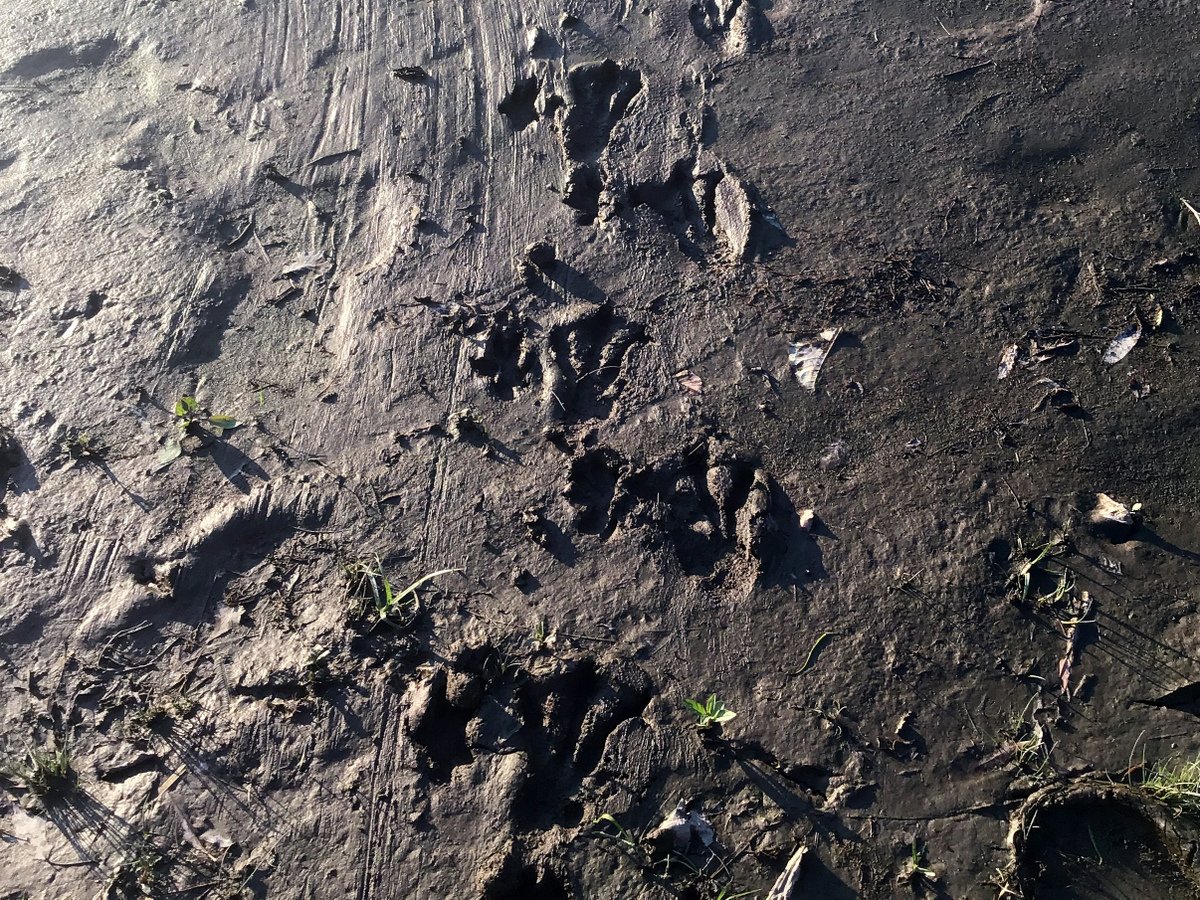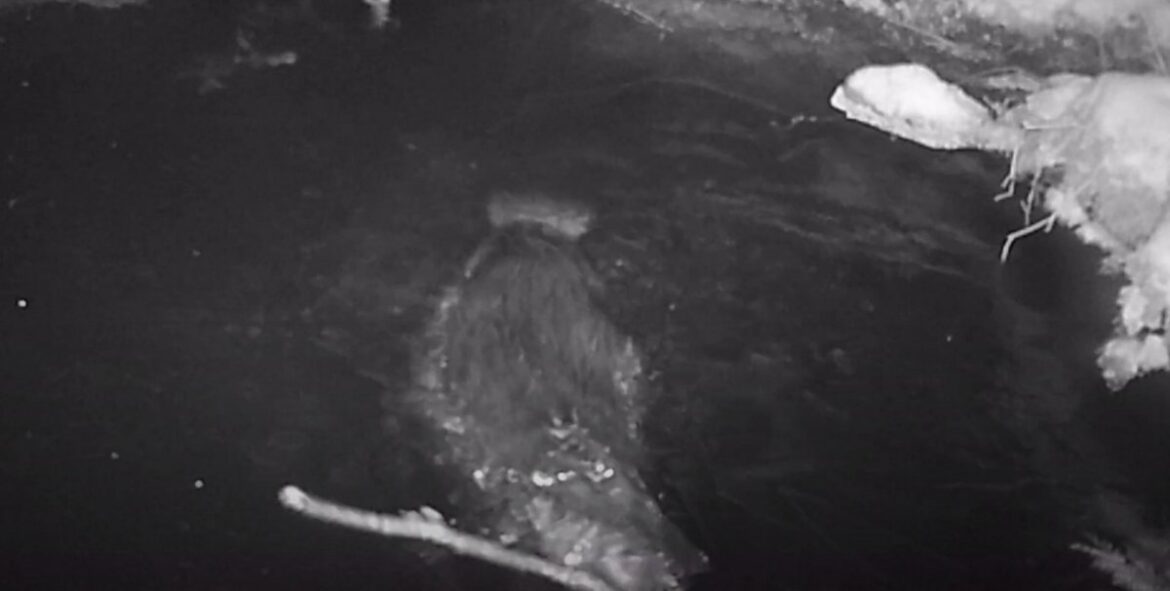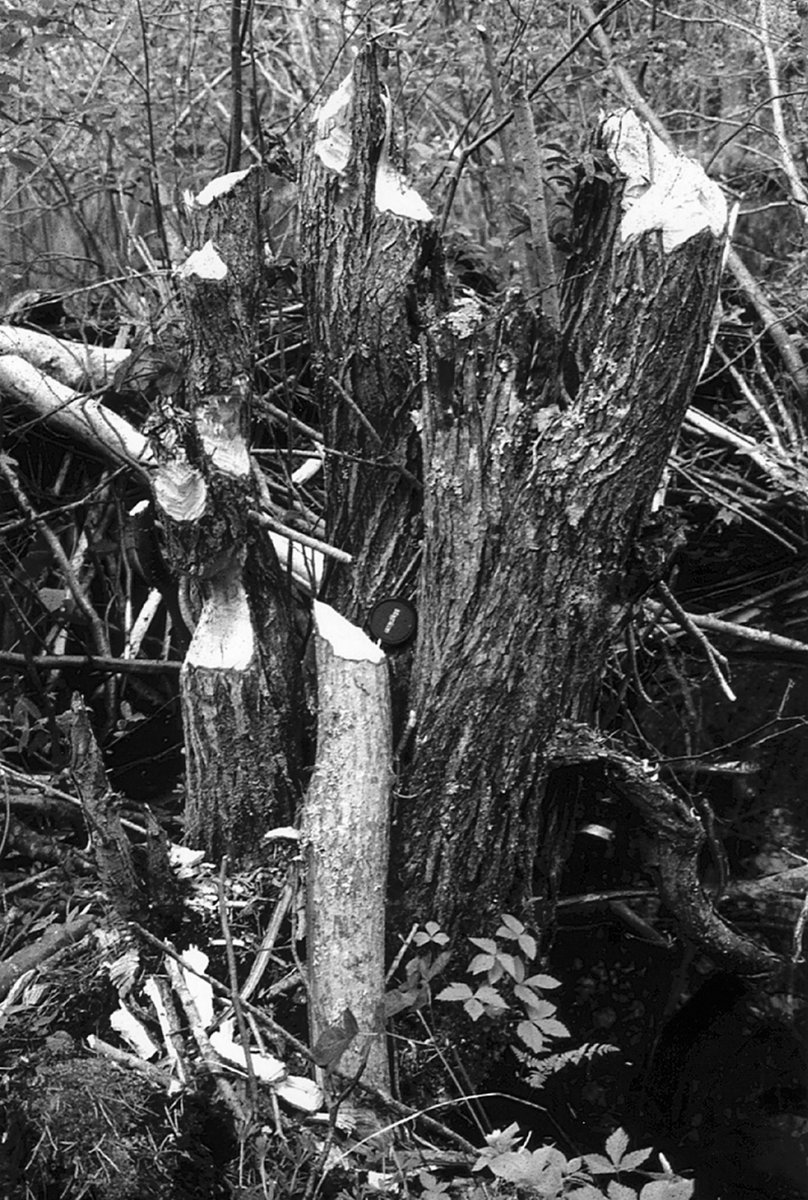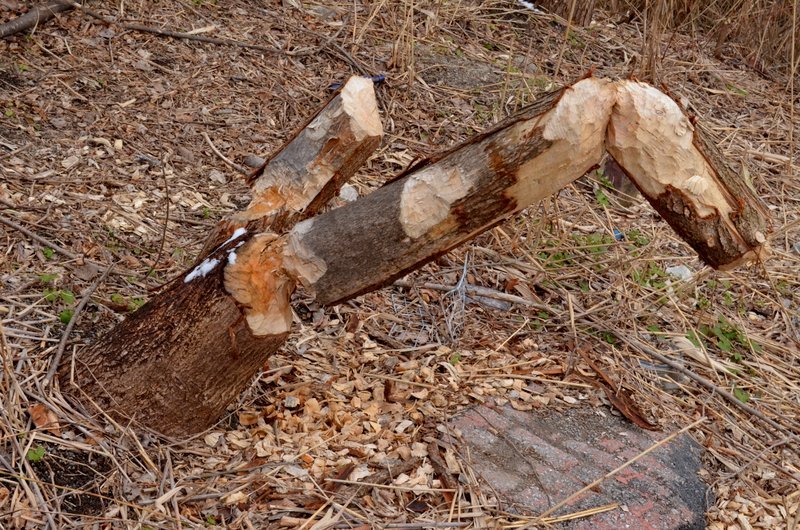
Beavers in winter
For beavers in the northern part of their range (they’re found from northern parts of Canada, throughout the United States and down into Mexico), cold weather limits their ability to forage in the winter as their aquatic habitats freeze over, entombing them in dark icy home for weeks to months. In preparation for the freeze over, beavers spend much of the fall amassing a stockpile of food. They fell trees, prune off large branches, drag them back to the water, and stake them down into the mud in a large underwater cache to consume later. The bulk of their food storing activity happens in the fall, but beavers will continue to add to their cache as long as they can climb up on land. But once the pond freezes, they’re left with whatever’s in their cache to get them through the dark winter.
Tracks from a beaver dragging a branch back to the water (Winooski River, Bolton Dam)
By late December, the beaver pond I’d been watching had frozen over nearly completely, save for a small hole in the ice. I’ve long observed holes dotting the edge of beaver ponds well into winter. The holes reminded me of beluga whales (as mammals, the whales need access to the surface to breathe in oxygen:Â video). I’d never seen beavers actually maintaining the ice holes, so I decided to put a camera on the hole and see how they kept the hole open.
Trail camera footage of beavers maintaining on opening in the ice (link)
It appears that beavers use three main strategies to actively keep the hole from freezing over:
- using their body weight to break off chunks of ice
- chewing on the edge of the ice to break off small pieces
- swimming: this churns up warmer water from lower down and brings it to the surface.
Beavers passively break ice as they move in and out of the water to forage. But beavers in the video can clearly be seen intentionally breaking the ice to widen the hole. As the ice thickened to the point where they could no longer easily break the ice with their body weight it appeared as though they switched to chewing the ice. Coupled with both these strategies, the beavers were constantly swimming in circles in the hole. So much so that they burned through my memory cards rather quickly – there were over 100 videos of them just swimming in circles in the small area where the water had yet to freeze over.
Still image of the beaver using a staghorn sumac stem to break apart the ice (from: video)
Tool use in beavers
In the video, about 7:40 in (link), the beavers appear to use a stick to help break apart the thin lamination of ice forming on the pond as temperatures dropped again!! From watching all the videos, it seemed like the beaver had actively retrieved the stick to use for this purpose rather this just being a happy coincidence, like the beaver was swimming by with the stick and happened to go by the hole and do some work.
The beaver had retrieved the sumac stick from its cache (about 30′ downstream) and would have taken a detour of about 10′ from the route back to its feeding spot down to go to this small side channel where the hole is.
Caption from article: "A photograph showing the Beaver’s use of a willow stem as a prop to enable cutting at the elevated height above the ground. The prop is the centrally located, lighter-coloured stem supporting the camera lens cap(diameter – 6 cm). Note that the Beaver has cut both the upper and lower ends of the prop; the lower endcut is hard to see due to ground cover. Unfortunately, the photograph does not show the 45° leaning angle" (article).
Another example of tool use in beavers
If I’m correct about the observation, this would be one of only two uses of tools by beavers in the literature. I posted to the American Society of Mammolgists listhost asking whether others had observed this behavior. Frank Dirrigl sent me an article detailing another instance where beavers used a cut willow branch as a “ladder” of sorts to perch about 3′ off the ground while cutting another tree. The authors write: “The use of this tool (prop) meant less land foraging that in turn reduced the risk of predation and prevented undue thermal stress” (source). Apparently foraging atop the perch is not “land foraging.”
This seems pretty unlikely to me. The author writes that gray wolves represent a significant threat to beavers, but I can’t imagine a big bad wolf (about 2.5′ at the shoulder) not being able to take a beaver perched awkwardly on a willow log at basically head height. It seems more likely to me that the prop allowed the beavers to chew through a smaller portion of the main stem where. It’s tough to cut down trees when they’re so tightly clumped together. Chewing 3′ up means that there’s more space between each stem (as you can see in the image above).







